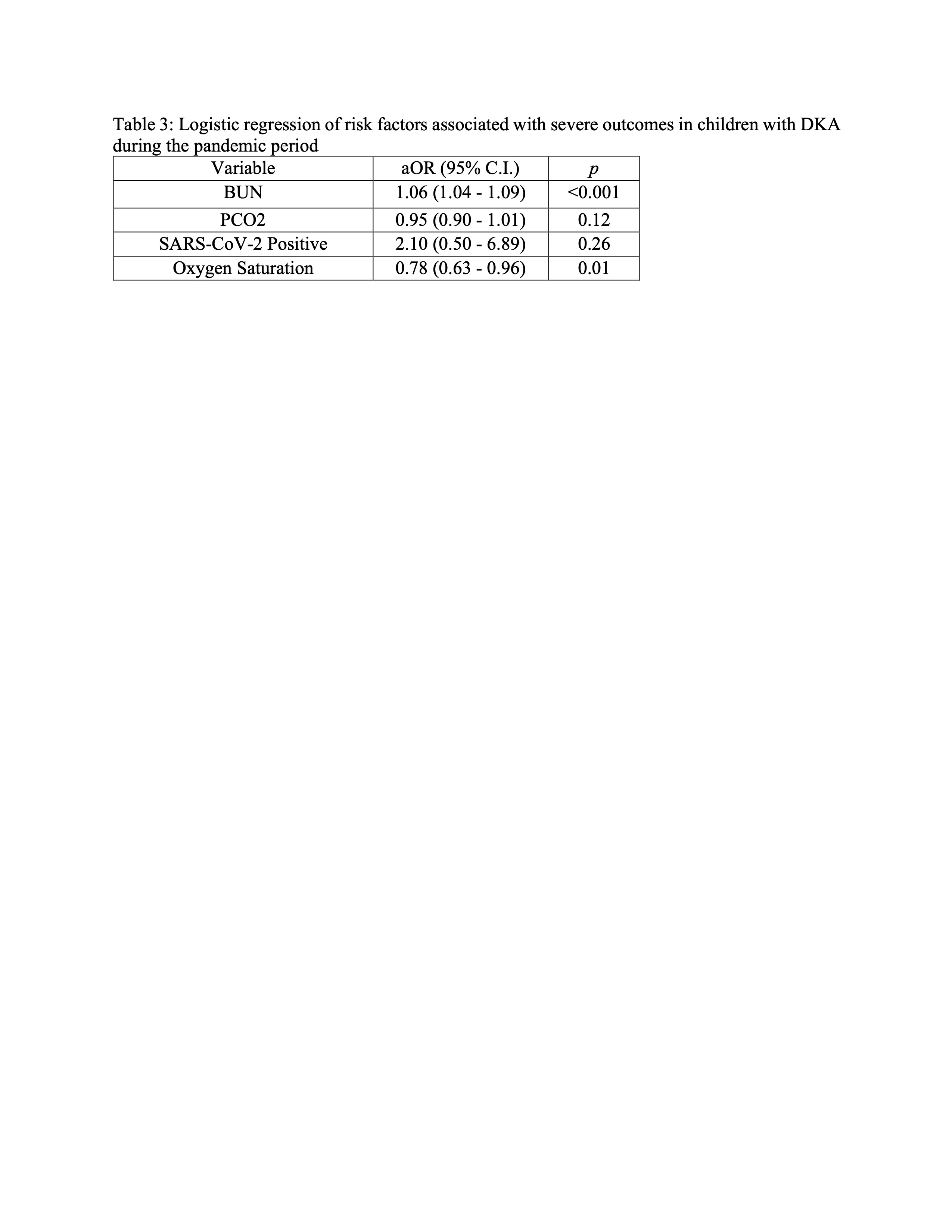Endocrinology: All areas
Endocrinology 1
188 - Diabetic Ketoacidosis severity and outcomes before and during the COVID-19 pandemic
Publication Number: 188.213

Cynthia O. Okaruefe, M.D (she/her/hers)
Resident
Children's Hospital of Michigan
Detroit, Michigan, United States
Presenting Author(s)
Background:
Adult studies reveal that SARS-CoV-2 infection is associated with an increased rate of new-onset diabetes (DM) and diabetic ketoacidosis (DKA) in those with preexistent diabetes. Pediatric data on the impact of the pandemic on the rate and severity of DKA is limited.
Objective:
Our objectives were to compare the occurrence, severity, and outcomes of pediatric DM between the pre-pandemic and pandemic period and determine the risk factors for severe DKA outcomes during the pandemic.
Design/Methods:
We conducted a retrospective study of children < 18 years of age evaluated at a pediatric emergency department for new-onset diabetes or DKA between March 1, 2018 - February 28, 2020 (pre-pandemic) and March 1, 2020 - February 28, 2022 (pandemic). We abstracted patient demographics, type of DM, clinical and laboratory features, disposition, and outcomes. We defined severe DKA as pH < 7.1 or bicarbonate < 5mmol/L. A severe outcome was defined as death, requiring mechanical or non-invasive ventilation, high-flow nasal cannula, or hyperosmolar therapy.
Results:
Among 673 eligible patients (pre-pandemic=353 and pandemic=320), there was no difference in the median age (p =0.76), proportions of sex distribution (p=0.16), race (p =0.24), type of DM (Type 1: 89% vs 86% and Type 2: 10.9% vs 13.6%, p=0.35), or new onset DM (51.9% vs 56.7%, p=0.24) between the two periods. (Table 1). There was an increase in the proportion of children with DKA (85% vs 74.2%, p< 0.0001) and severe DKA (29.4% vs. 18.9%, p< 0.001). The average number of DKA visits per patient (1.23 vs. 1.1 p < 0.001) also increased during the pandemic. Lower median serum bicarbonate, blood pH, and higher beta-hydroxybutyrate occurred in children during the pandemic.
Increased proportions of children with severe outcomes (5% vs 1.7%, p< 0.01) and those requiring ICU admissions (35% vs.26.2%, p< 0.01) occurred during the pandemic (Table 2). Thirty-three children had SARS-CoV-2 infection, of which four had severe outcomes. During the pandemic, severe outcomes were associated with blood urea nitrogen (aOR: 1.06, 95% CI: 1.04 – 1.09, p< 0.001) and oxygen saturation (aOR: 0.78, 95% CI: 0.63 – 0.96, p< 0.05). SARS CoV-2 infection and PCO2 levels were not associated with severe outcomes (Table 3).
Conclusion(s):
There was an increase in the proportions of children with DKA, severe DKA, and those with severe outcomes during the pandemic. While concurrent SARS-CoV-2 infection was not associated with severe outcomes, elevated blood urea nitrogen and lowered oxygen saturation were risk factors. Additional studies are required to confirm these findings..jpg)


